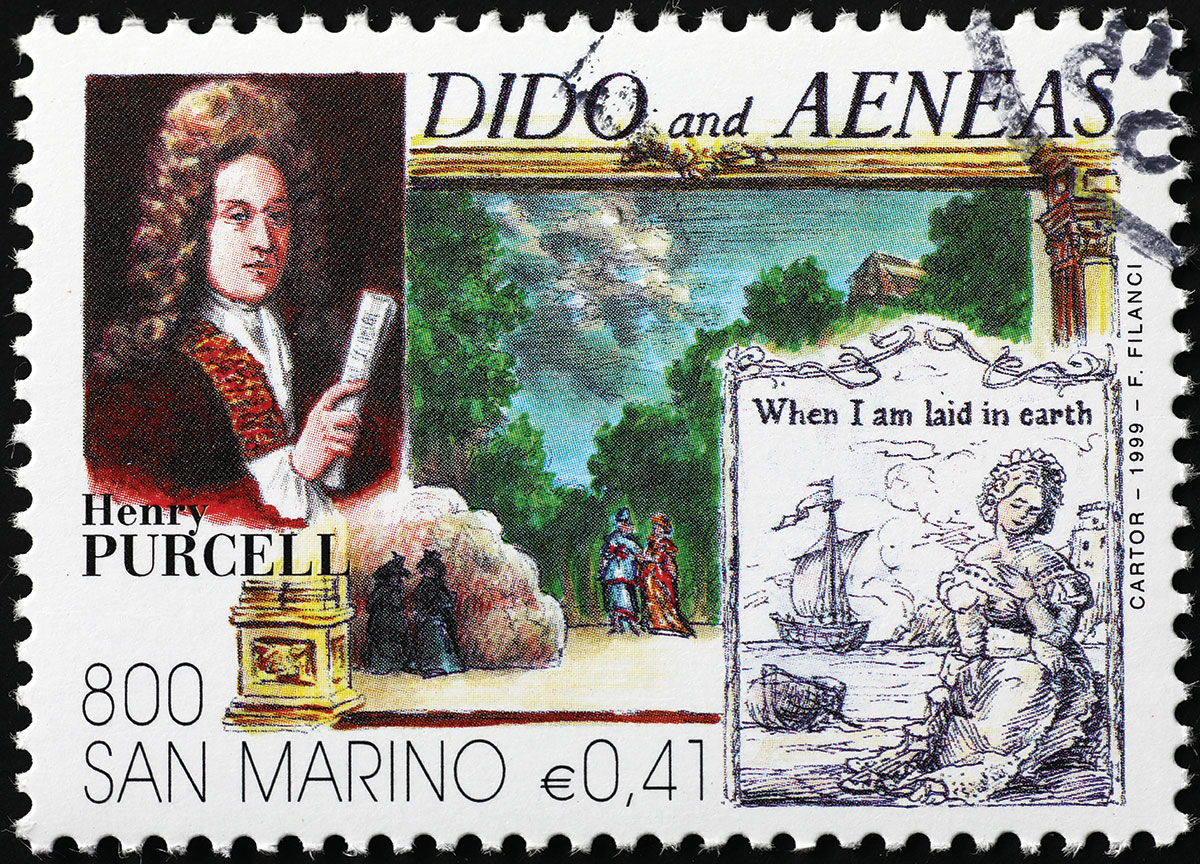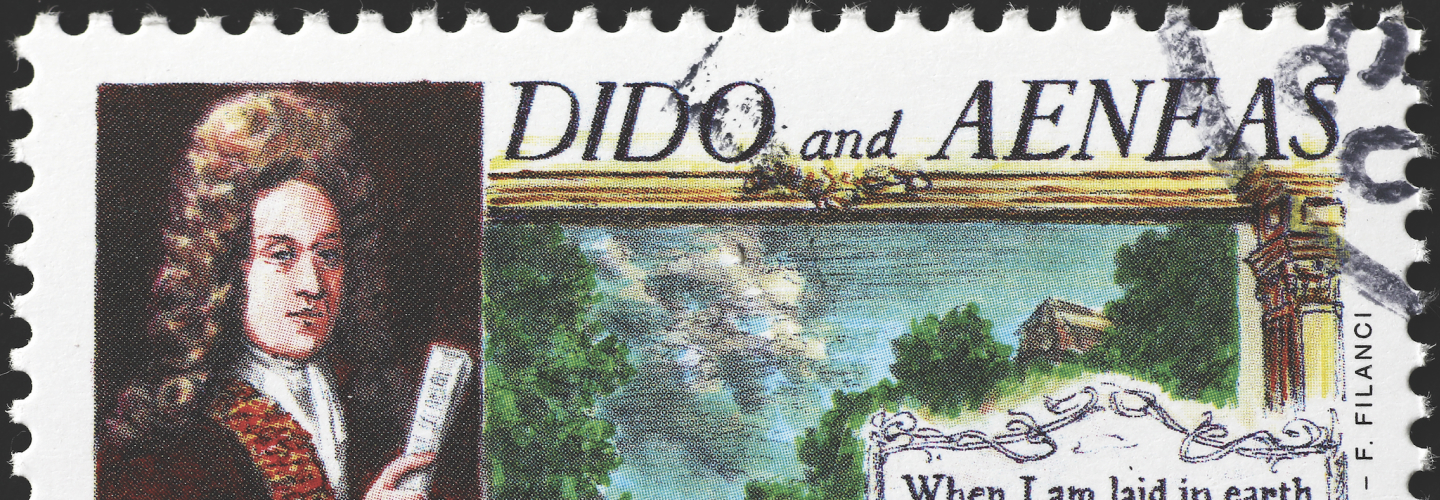in Story & News
Dido and Aeneas:
The Birth of English Opera
and Its Social Context
By Jeong-sun Ahn, music critic
“While the Frenchman is loud in the praises of a Lulli and a Rameau,
the German in that of a Handel and a Bach, and the Italian of a Palestrina and a Pergolesi, an Englishman is equally proud in pointing to a name equally dear to his country—for Purcell is as much the boast of England in music as Shakespeare in drama, Milton in epic poetry, Locke in metaphysics, or Sir Isaac Newton in mathematics and philosophy.”
- Charles Burney, A General History of Music
England’s First Opera: Purcell’s Dido and Aeneas
Henry Purcell’s (1659–1695) Dido and Aeneas is considered a masterpiece of English Baroque opera and a source of national pride for English opera. Semi-operas with incidental music were common in 17th-century England, but there were few authentic operas that could compare to those of Italy or France. Against this backdrop, Dido and Aeneas is essentially England’s first opera, marking an important turning point in British musical history. Particularly notable is Dido’s aria in Act 3, “When I Am Laid in Earth,” which is widely known as a quintessential lament utilizing a ground bass. After Purcell, composers like Edward Elgar, Ralph Vaughan Williams, Gustav Holst, and Benjamin Britten emerged; for a long time, however, Purcell remained the symbol of English music. Still, it was not until 200 years after his death in 1895 that England’s first opera was modernized and performed on stage again.

A commemorative stamp issued by the Republic of San Marino in 1999, celebrating the 400th anniversary of opera. The stamp features a painting symbolizing composer Henry Purcell and Dido and Aeneas.
A commemorative stamp issued by the Republic of San Marino in 1999, celebrating the 400th anniversary of opera. The stamp features a painting symbolizing composer Henry Purcell and Dido and Aeneas.
The Debate Over the Premiere Year
Dido and Aeneas was created during a period of political upheaval, spanning the reigns of Charles II, James II, and William III and Mary II. However, the exact year of its premiere is unclear, leading to two competing theories in academic circles: the 1689 premiere theory and the 1684 premiere theory. Although the difference is only five years, this is not just a matter of chronology. The Glorious Revolution of 1688 deposed James II and installed William III and Mary II as co-rulers, ending the era of absolute monarchy and establishing a constitutional monarchy. From this point on, the power of the monarchy was significantly limited by Parliament.
The traditional view—based on the 1689 premiere theory—claims that the opera was first performed for educational purposes at the Josias Priest School for Girls in Chelsea, London. If this is correct, England’s first opera emerged at a time when royal power was weakening and a parliamentary political system was being solidified. On the other hand, according to the 1684 premiere theory, the opera may have been used as court entertainment celebrating the monarchy during the reign of Charles II. After his restoration, England was influenced by France, and French culture became fashionable at court, with the royal orchestra even run by French musicians. If this theory holds true, Dido and Aeneas could have been a symbolic work designed to show that England was not culturally inferior to Europe, combining Italian, French, and English elements in an opera performed at the court of Charles II.
Restoration
1684 Premiere Theory
Court Entertainment Purpose
Dido and Aeneas
Constitutional Monarchy
1689 Premiere Theory
Educational Purpose
Birth of Opera Amidst Political Upheaval: From Absolute Monarchy to Constitutional Monarchy
The birth of opera is closely tied to the political environment of the absolute monarchy era. After opera first emerged in early 17th-century Italy, France, Germany, and England each adopted and developed Italian opera in their own ways. French tragédie lyrique, English masque, and German Singspiel are all genres that incorporated national characteristics into the Italian opera form. Opera required substantial capital and patronage, and it was primarily performed in the courts of absolute monarchies that could support such large-scale productions. In places where royal power was absolute, like under Louis XIV of France, opera developed as a form of entertainment for the king and nobility. Slovenian philosopher Slavoj Žižek described opera as a symbol of absolute monarchy, noting that it was the aristocrats and monarchs who rocked its cradle when opera was born.
Dido and Aeneas was also born in the age of absolutism, and the debate surrounding its premiere year is not merely a matter of music history but an important clue to understanding the political shifts from absolute monarchy to constitutional monarchy. Henry Purcell’s Dido and Aeneas is a monumental work of English opera and a piece of art born amidst political upheaval. The debate over its premiere year allows for a significant political interpretation of whether the opera was court entertainment rooted in the absolute monarchy of the Restoration period or a work with educational purposes born in the parliamentary political system after the Glorious Revolution. After the Glorious Revolution, England achieved political stability and public concert halls flourished, with the consumption of music quickly shifting to the middle class. Dido and Aeneas remains a key example of the birth and development of opera amidst two social trends: absolutism and the shift of capital toward the middle class.
